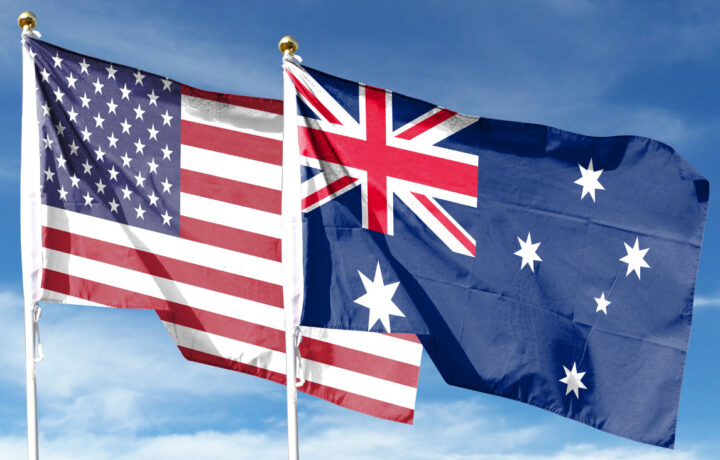During Australian Prime Minister Anthony Albanese’s recent visit to the United States, the White House announced that the two countries have agreed to expand their cooperation in a wide range of areas, including unmanned combat aircraft, commercial space launch, and critical minerals.
The initiatives will help the U.S. and Australia build an “innovation alliance” amid the “growing complexity of global and regional challenges,” the White House said in an October 25 statement.
COMBAT AND SURVEILLANCE AIRCRAFT
The U.S. and Australia indicated they will explore trilateral cooperation with Japan to enhance interoperability and accelerate technology transfer for unmanned aircraft, including those that can collaborate with manned combat aircraft. U.S. officials believe that advancing unmanned aircraft could help counter potential adversaries, especially China.
In manned aviation, Australia welcomed the U.S. Air Force’s decision to buy 26 Boeing E-7A Wedgetail airplanes to replace its aging Boeing E-3 Sentry airborne warning and control aircraft. The Royal Australian Air Force has been flying E-7As for years and recently sent one of them to Germany to monitor potential threats to Western aid being shipped to Ukraine.
Boeing received a $1.2 billion contract in February to begin E-7A work for the U.S. The U.S. Air Force expects its Wedgetail production to start in fiscal year 2025, and it aims to begin fielding its first E-7A by fiscal year 2027.
SPACE LAUNCH DOWN UNDER
Another highlight of Albanese’s visit was the signing of the U.S.-Australia Technology Safeguards Agreement, which will allow U.S. companies to conduct space launches in Australia. The document includes legal and technical measures to protect U.S. technology, including rockets and satellites.
“In Australia, American companies will have access to more high-quality launch sites so that they can increase the frequency of their operations,” U.S. Secretary of State Antony Blinken said at an Oct. 26 signing ceremony. “They’ll be closer to the equator, where the Earth spins the fastest, so their rockets get an extra boost and use less fuel. And of course, Americans will gain some brilliant Australian colleagues.”
ARTIFICIAL INTELLIGENCE, CRITICAL MINERALS
Underscoring the increasing importance of artificial intelligence, the U.S. and Australia welcomed Microsoft’s decision to spend U.S. $3 billion to expand its data center and AI infrastructure in Australia, train Australians for cloud and AI-related jobs, and create an Australian cybersecurity entity.
The two countries cautioned that AI development and deployment should take place responsibly, especially when used to enable autonomy in military systems.
Turning to critical minerals, the U.S. and Australia pledged to jointly boost their investment in mining and processing projects. The U.S. is trying to reduce its reliance on China for critical minerals, which are used in weapon systems in addition to many commercial items, such as electric vehicle batteries.
The U.S. Department of Defense has already provided hundreds of millions of dollars to a host of companies, including Australia-based Lynas Rare Earths, to build or improve critical mineral processing facilities in the U.S.
EARLIER ANNOUNCEMENTS ON AUKUS, WEAPONS
U.S.-Australian defense ties were growing well before Albanese’s visit. In March, Australia, the United Kingdom, and the U.S. unveiled plans to stand up Australian production of conventionally armed, nuclear-powered attack submarines. Under the AUKUS arrangement, the submarines will be based on a UK design and will incorporate U.S. technology.
In July, the U.S. announced it will help Australia begin co-producing the Lockheed Martin Guided Multiple Launch Rocket System (GMLRS) by 2025. Demand for GMLRS has surged since Ukraine began using it to counter Russia’s February 2022 invasion.




